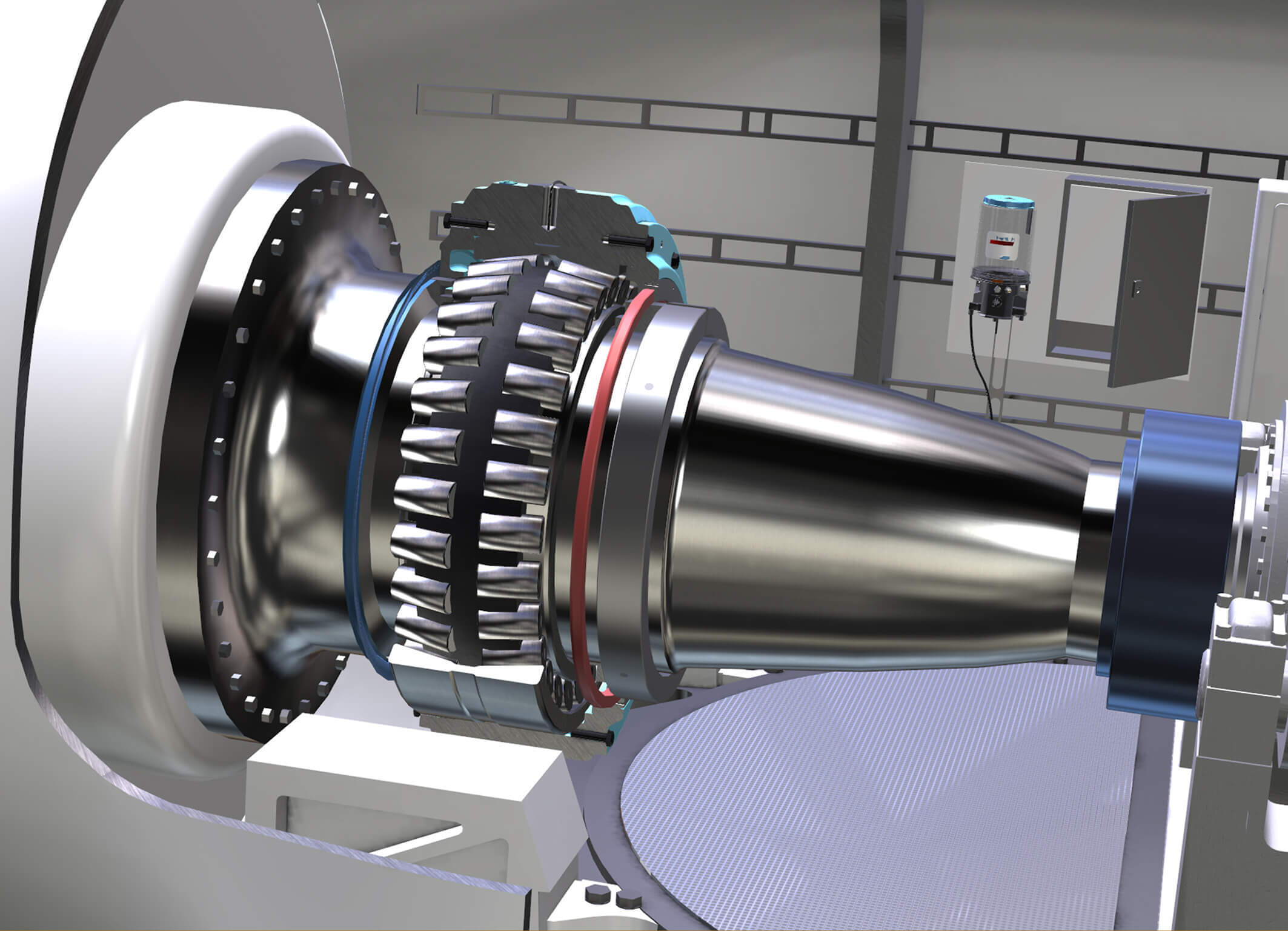
Bearing Manufacturer & Supplier
Specialize in ball bearings, roller bearings, thrust bearings, thin section bearings etc.
Wind turbine
Wind energy, as a renewable clean energy, has been valued and developed rapidly by various countries in the world. Large wind turbines are the main equipment for wind energy generation. The blade length of many 2MW wind power plants under construction is about 40 meters, the height of the rotating shaft is between 60 and 100 meters, and the total weight exceeds 200 tons. Therefore, the bearings used in wind turbines must also be large, ranging from 100 mm to 700 mm inside diameter. Some special types of equipment require bearings with an inner diameter of nearly 2 meters. Bearings for wind turbines require high reliability to ensure trouble-free operation of windmills for than 20 years.

Table of Contents
ToggleMain features of wind turbine bearings:
1. The operating environment is harsh.
2. High maintenance cost.
3. High service life requirements.
Generator bearing
Bearing types: deep groove ball bearings, angular contact bearings, slewing ring bearings.
Working conditions: high speed (1000-1500rpm), high temperature (90-120°C) and heavy load.
Grease requirements: excellent shear stability, good oxidation stability, good wear resistance, excellent low temperature bearing start-up performance.


Spindle bearing
Bearing type: tapered roller bearing, insert spherical bearing.
Working conditions: low speed (<25rpm), wide temperature range, heavy load, vibration, high humidity.
Grease requirements: excellent wear resistance, good oxidation stability, excellent low temperature bearing start-up performance, good water resistance, etc.
Pitch/Yaw Bearings
Bearing type: four-point contact ball bearing
Operating conditions: wide temperature range, heavy load, vibration, high humidity.
Grease requirements: excellent corrosion resistance and wear resistance, excellent low temperature bearing start-up performance, good water resistance, good oxidation resistance, stability, etc.
Each wind turbine equipment has 1 set of yaw bearings, 3 sets of pitch bearings (not equipped with wind turbines below MW), 3 sets of generator bearings (deep groove ball bearings, cylindrical roller bearings), 2 sets of main shaft bearings (spherical bearings) roller bearings), a total of 9 sets.
In addition, there are gearbox bearings. There are three structural forms of gearboxes. The first requires 15 sets of bearings, the second requires 18 sets of bearings, and the third requires 23 sets of bearings. Therefore, the average number of wind turbine bearings is 27 sets.


The structural forms of wind turbine bearings mainly include four-point contact ball bearings, crossed roller bearings, cylindrical roller bearings, spherical roller bearings, slewing ring bearings and deep groove ball bearings. Yaw bearings are mounted at the tower-to-cockpit connection, and pitch bearings are mounted at the root connection of each blade and hub.
AUB is a leading supplier of wind turbine bearings and has been engaged in technical research and production of wind power bearings. 15 year track record in supplying slewing ring bearings to the renewable energy market. AUB’s bearing pitch, yaw bearing, main shaft bearing and motor bearing solutions support the critical requirements of a wide variety of systems, including high and low wind speeds; on land or offshore; from 200 kW to 5.0 MW. Four-point and eight-point bearings can index or position the turbine blades according to wind speed to optimize the blade angle.


AUB pitch bearings index or position turbine blades according to wind speed to optimize blade angle. Our yaw bearings allow the turbine nacelle to rotate in the wind and support the nacelle on the tower.
AUB slewing ring bearings for wind turbines feature deep groove gothic arched raceways and maximum ball complement. Integral seals (or non-contact shields, for smaller bearings) help keep contaminants out. The HS, HT, MT and XT series slewing bearings feature a four-point contact design that provides excellent moment, thrust and radial load capabilities. The raceways of the four-point contact slewing ring provide four points of contact with the balls, enabling them to bear radial, thrust and moment loads individually or simultaneously.


Eight-point contact double row ball bearings have two raceways, located in the inner and outer rings. This results in a total of eight possible surfaces for the ball to contact at any one time, providing excellent moment, thrust and radial load capabilities. Manufactured with precision, the raceways are closely matched to provide a high degree of load distribution.
AUB’s experience in the wind energy sector helps customers specify the most suitable corrosion resistant materials and coatings, including zinc, paint or other surface treatments, to meet critical operating temperatures down to -40°C. Unique seals are available for severe operating conditions and AUB’s manufacturing capabilities accommodate internal and external gear designs in both hardened and unhardened conditions.
Wind power bearing production process
1. Control the forging temperature.
2. Control the modulation process to ensure the mechanical performance.
3. Control the depth of the intermediate frequency quenching hardening layer on the surface.
4. Avoid micro-cracks on the surface.
Wind power bearing cleaning process
1. Inspection of forging billets
2. Rough car
3. Finish turning
4. Forming fine car
5. Heat treatment
6. Gear hobbing and milling
7. When drilling, blueing, phosphating and vulcanization can be carried out according to customer requirements.
8. Coarse grinding and fine grinding
9. Demagnetization, cleaning, assembly, surface coating, grease injection, packaging


